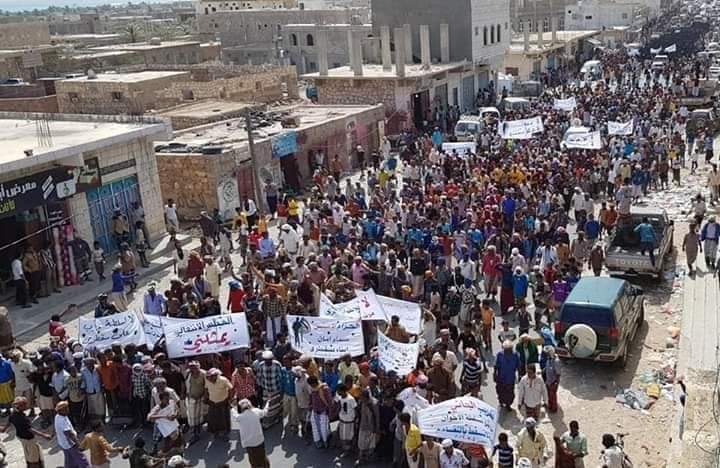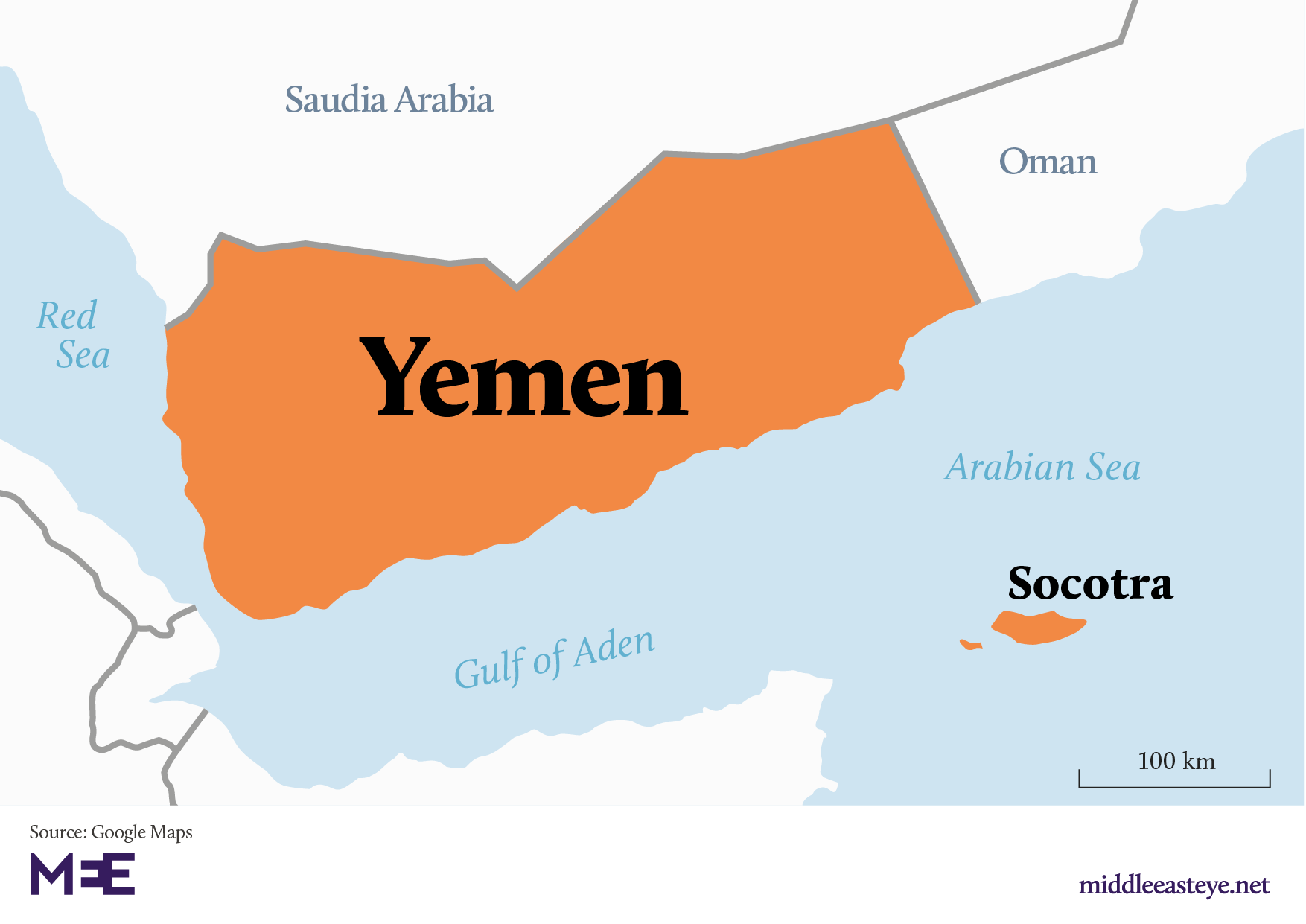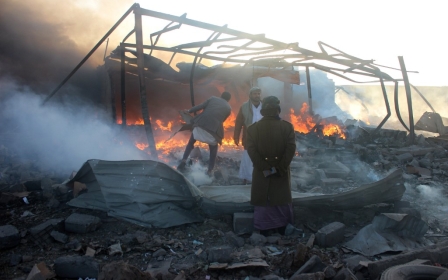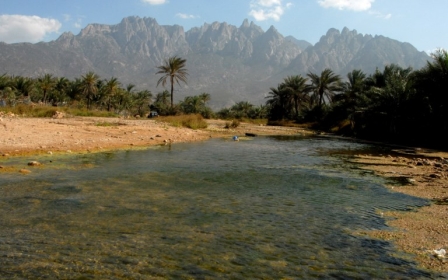Arrival of UAE-backed forces stokes tensions on Yemen's Socotra

The arrival last week of hundreds of UAE-backed Yemeni forces on Socotra has fuelled protests and further divided residents of the small island.
On one side are those, including the island's governor, Ramzi Mahroos, who say the forces are part of a broader Emirati effort to occupy the island, located in one of the world's busiest shipping lanes.
On the other side are locals who point to the food aid and investment in infrastructure that the UAE has provided, and say al-Islah, the Yemeni branch of the Muslim Brotherhood, is stoking anti-UAE sentiment.
Over the past year, tensions have been sparked between the UAE and Saudi Arabia, which leads the coalition including the Emiratis that intervened in the war in 2015, over which will dominate Socotra.
New MEE newsletter: Jerusalem Dispatch
Sign up to get the latest insights and analysis on Israel-Palestine, alongside Turkey Unpacked and other MEE newsletters
Now the dynamics from southern Yemen, where the al-Islah party, backed by Yemen's exiled president Abd Rabbuh Mansour Hadi, wrestle against the UAE-backed Security Belt Forces are spilling onto the island.
The latest tensions kicked off last week after the deployment of the new batch of UAE-trained Yemeni forces to an Emirati military camp on the island. Following their arrival, there were clashes between the UAE-backed forces and those aligned with Hadi.
On Sunday, hundreds of demonstrators marched through Hadibu, the island’s capital, chanting slogans against the Emirati militias and in support of the Yemeni government.
'The government did not help Socotra with anything during the last years and only UAE did'
- Mubarak, Socotra resident
Protesters say they see the continuing Emirati presence on the 80-mile long island, with a population of around 60,000, as an invasion without any connection to the war.
“Socotra is the Yemeni island that did not witness any fighting, so there is no need for military presence inside it,” said Mohammed al-Mizraqi, a local who participated in Sunday’s protests. “Socotra never witnessed any presence of military forces like nowadays.
“The Houthis did not invade Socotra but the Emiratis did - so we will oppose this invasion with all kinds of resistance until we liberate our island from the new invaders.”
But other residents point to the money that the UAE has invested in infrastructure and disaster relief since its arrival.
“The UAE builds hospitals, schools and helped needy people with food and money. The Emiratis helped the victims of the Monaco hurricane, so how can we demand them to go?” Mubarak, another resident, told MEE earlier this week.
“The government did not help Socotra with anything during the last years and only the UAE did, so I hope that protests next time take to the streets against the Islah party because they encourage residents to protest against the Emirates.”
Sure enough, on Thursday, there were fresh demonstrations against Islah as those in support of the UAE accused the party, with whom the island's governor is aligned, of creating chaos.
Island invasion?
The UAE first deployed fighters to Socotra last April. Until then, the island had been free of the fighting that raged on mainland Yemen.
UAE forces now oversee the island’s airport and seaport, meaning that no one can enter the island until they are inspected by Emirati-backed forces.
'The Houthis did not invade Socotra but the Emiratis did so we will oppose this invasion with all kinds of resistance'
- Mohammed al-Mizraqi, Socotra resident
A source in the governor’s office who spoke on condition of anonymity said it was true that the UAE had helped residents, but that it was only part of a strategy to maintain its grip on the island.
“This is what invaders usually do to gain the support of people but only educated people know this is the first step of invasion,” he said.
One major objection, he said, is that the UAE is using Yemeni forces, so if clashes break out, they are between Yemenis, while the Emiratis continue to gain territory from a safe distance.
Pushing the Emiratis out with force is impossible, he said. “So we hope that our leadership can reach an agreement to liberate us from the UAE.”
Seasoned Yemeni journalist Mohammed Ali told MEE that the Emirati strategy in Socotra is similar to how it has behaved in other parts of the country: it is willing to lose money in an effort to secure strategic territory, but not men, he said.
“The UAE is not willing to lose more soldiers either in Socotra or in any other province, so they train Yemeni fighters and ask them to implement the UAE’s agenda,” Ali said.
“The UAE has imposed Security Belt Forces in Aden so no one can oppose them easily there and today they repeat the same scenario in Socotra and no one will oppose them in Socotra.”
The arrival of the new UAE-backed forces comes as Western diplomats have said that the Emiratis are pulling their own troops and equipment from the southern port of Aden and Yemen’s western coast, concerned over rising US-Iran tensions in the Gulf.
The Emiratis have not commented on the apparent drawdown.
Middle East Eye delivers independent and unrivalled coverage and analysis of the Middle East, North Africa and beyond. To learn more about republishing this content and the associated fees, please fill out this form. More about MEE can be found here.





